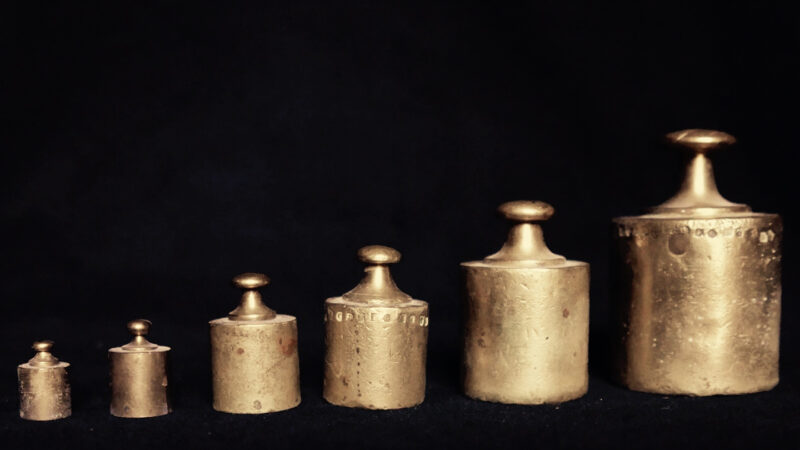The metric system is growing. Here’s what you need to know

Meet the metric system’s newest prefixes: ronna-, quetta-, ronto- and quecto-.
Adopted November 18 at the 27th General Conference on Weights and Measures in Versailles, France, ronna- and quetta- describe exceedingly large numbers while ronto- and quecto- describe the exceedingly small. This is the first time that the International System of Units, or SI, has expanded since 1991, when the prefixes zetta-, yotta-, zepto and yocto- were added (SN: 1/16/93).
Numerically, ronna- is 1027 (that’s a digit followed by 27 zeroes) and quetta- is 1030 (30 zeroes). Their tiny counterparts ronto- and quecto- also refer to 27 and 30 zeroes, but those come after a decimal point. Until now, yotta- and yocto- (24 zeros) capped off the metric system’s range.
Science News spoke with Richard Brown, head of metrology at the National Physical Laboratory in Teddington, England, about what the latest SI expansion means for science. The following conversation has been edited for clarity and brevity.
SN: Why do we need the new prefixes?
Brown: The quantity of data in the world is increasing exponentially. And we expect that to continue to increase and probably accelerate because of quantum computing, digitalization and things like that. At the same time, this quantity of data is starting to get close to the top range of the prefixes we currently use. People start to ask what comes next?
SN: Where do the prefix names come from?
Brown: About five years ago, I heard a BBC podcast about these new names for quantities of data. And the two that they mentioned were brontobyte and hellabyte. Brontobyte, I think comes from brontosaurus being a big dinosaur and hellabyte comes from “‘hell of a big number.”
The problem with those from a metrology point of view, or measurement point of view, is they start with letters B and H, which already are in use for other units and prefixes. So we can’t have those as names. [It was clear] that we had to do something official because people were starting to need these prefixes. R and Q are not used for anything else, really, in terms of units or SI prefixes. [The prefix names themselves are] very, very loosely based on the Greek and Latin names for nine and 10.
From astronomy to zoology
Subscribe to Science News to satisfy your omnivorous appetite for universal knowledge.
SN: How will the prefixes be used?
Brown: The whole point of the International System of Units is it’s an accepted global system, which if you use, you will be understood.
When you use a prefix with a unit, it means that the number associated with the unit changes. And people like small numbers that they can understand. So you can express the mass of the Earth in terms of ronnagrams; it’s six ronnagrams. And equally the mass of Jupiter is two quettagrams. Some good examples of [small numbers] are that the mass of an electron is about one rontogram, and the mass of one bit of data as stored on a mobile phone is around one quectogram.
I think the use of a suitable prefix makes things more understandable. And I think we shouldn’t forget that even if there’s not always a direct scientific usage immediately, they will gain traction over time.
For all the latest Science News Click Here
For the latest news and updates, follow us on Google News.

